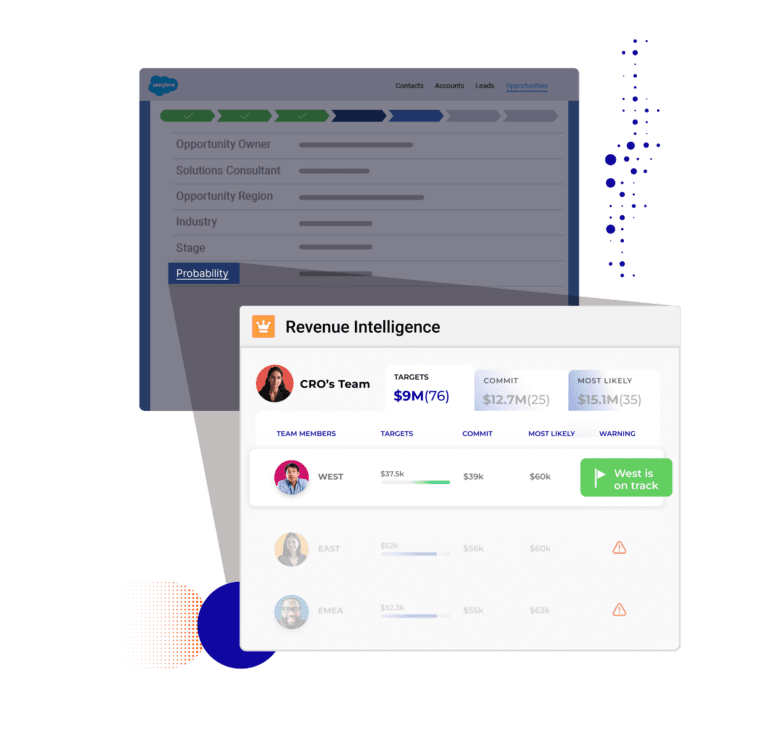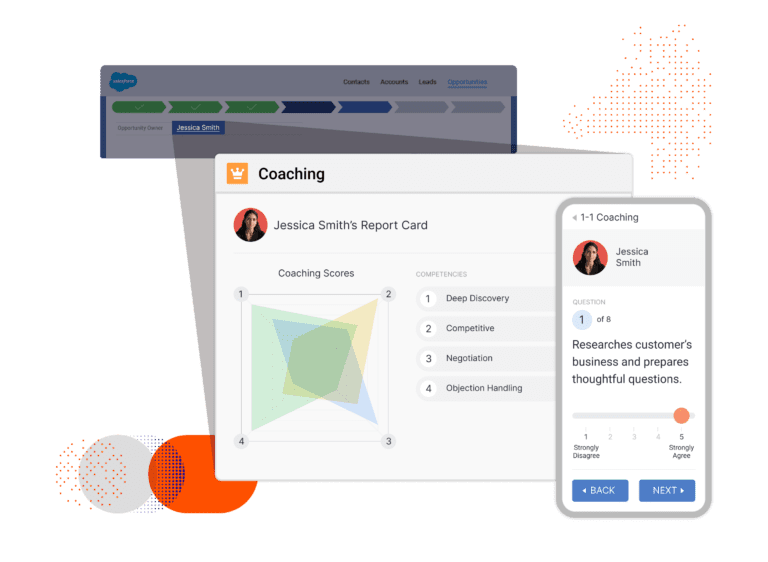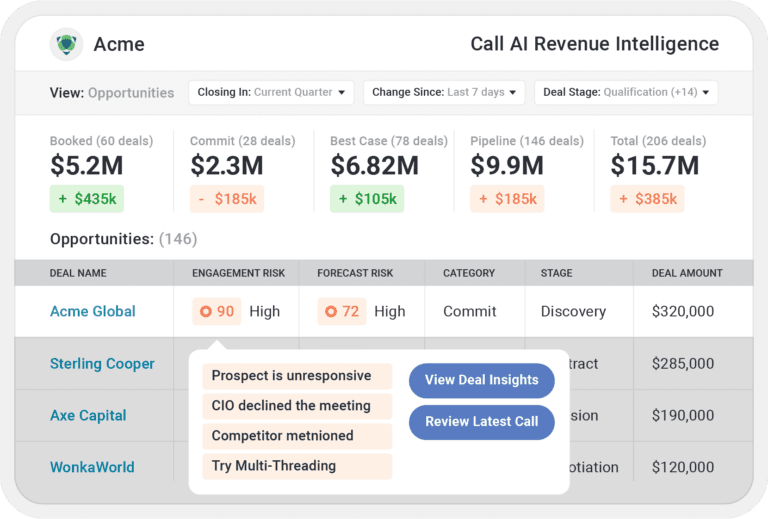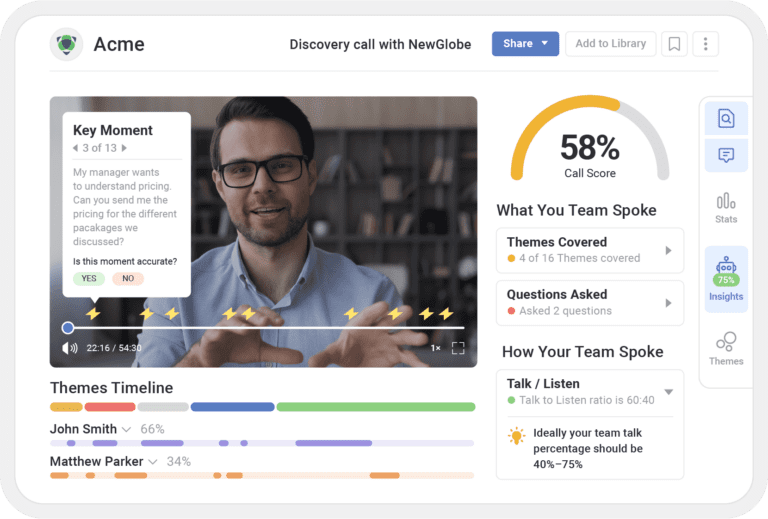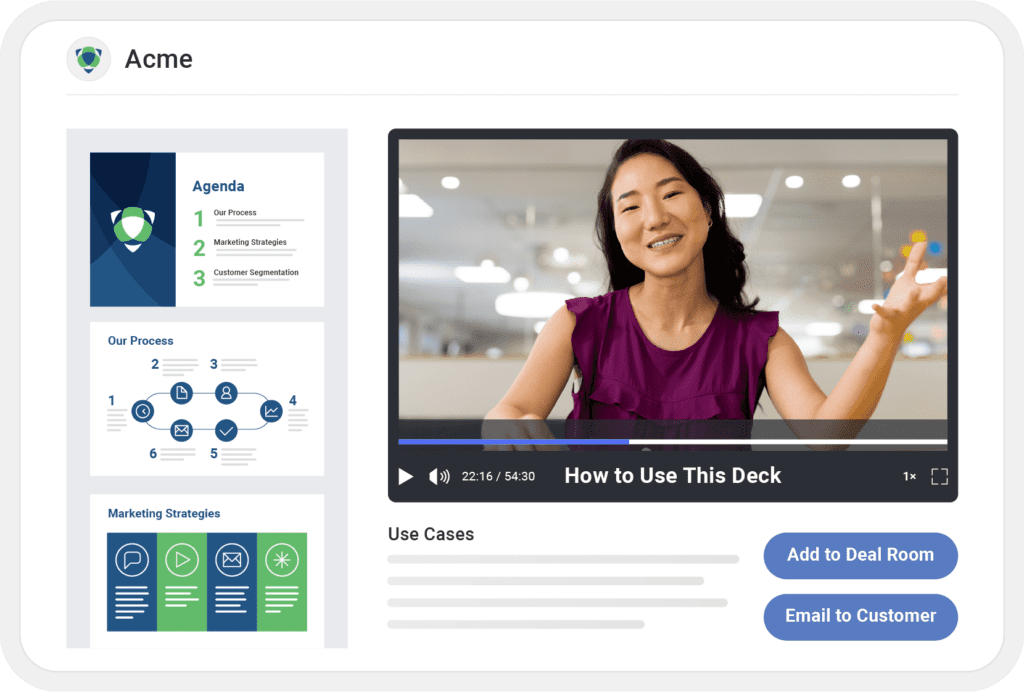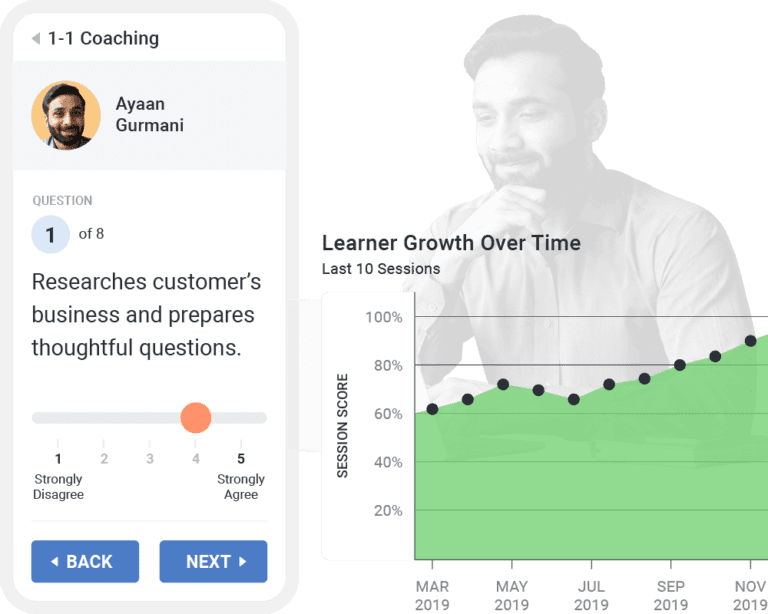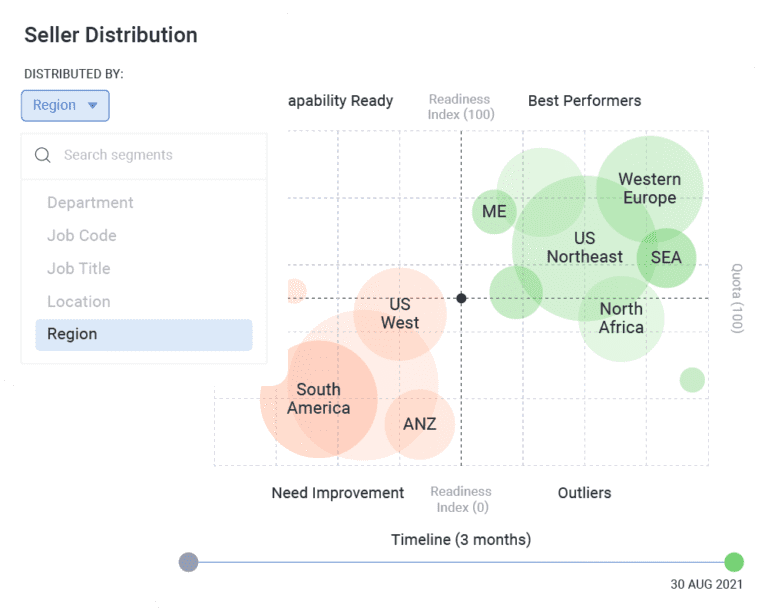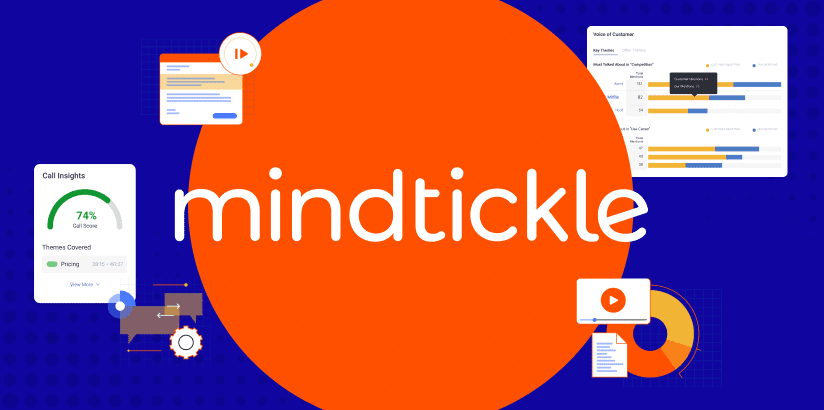The Sales Cycle: What is it and How to Optimize it for a Better Sales Process
![]() Rahul Mathew
on
January 11, 2024
Rahul Mathew
on
January 11, 2024
Every sales team aspires to close more deals. But leaving sales reps to their own devices isn’t the best way to achieve that goal.
Instead, sales organizations must define a sales cycle. That way, sellers have a simple, repeatable framework they can follow for every deal and sales organizations have a more accurate way to predict revenue.
Read on to explore what a sales cycle is, what the sales cycle stages are, and how you can optimize your sales cycle to drive better outcomes.
What is a sales cycle?
At this point, you may be asking yourself, “What is a sales cycle?” So let’s start things off by aligning on what a sales cycle is. For this blog, we’re specifically focusing on the B2B sales cycle.
A sales cycle is the series of stages the sales team goes through when closing deals. The B2B sales cycle incorporates everything from initial contact to contract signature.
Sales cycle and sales process are two phrases that are used often. However, it’s important to note that these two things aren’t the same.
The sales cycle describes the steps a seller completes to close a deal. The sales process, on the other hand, describes how those steps are completed. Said another way, the sales cycle is the “what” and the sales process is the “how.”
The length of a sales cycle varies widely based on factors including industry, product, and price point – among others. For example, a B2C sales cycle is typically much shorter than a B2B SaaS sales cycle. That’s because B2B deals are often larger and involve more stakeholders.
Sales organizations need to define the sales cycle. But why?
Defining the sales cycle stages helps ensure sellers are following a repeatable framework every time. Sellers can visualize how the process should look – and what steps they need to take when.
Identifying sales cycle stages can also help sales leaders assess the pipeline and understand where deals are getting stuck. These insights can shed light on opportunities to improve sales processes – and sales outcomes.
In addition, a well-defined sales cycle makes it easier for sales leaders to more accurately predict future sales.
What are the different sales cycle stages?
The sales cycle includes several different stages. What are the B2B sales cycle stages?
Sales cycle stages vary from company to company. However, most sales cycles include the following stages.
Lead generation
Prospecting
Initial contact
Nurturing
Qualification + discovery
Demo
Objection handling
Closing
Lead generation
A lead is anyone who has taken an action indicating they’re interested in your company or your solutions. For example, they may have downloaded an eBook, signed up for your newsletter, or requested a demo on your website.
However, not all leads are a good fit for your products and services. Instead, sellers must determine which leads are qualified, which brings us to the next stage.
Prospecting stage
Prospecting is the stage of the sales cycle focused on identifying potential customers who are a good fit for your products or services. Often, organizations develop ideal customer profiles (IRPs) to help sales teams understand which prospects may (or may not) be a good fit. That way, sellers can spend their time on prospects who are most likely to convert.
Initial contact stage
Once you’ve determined that a prospective customer is a good fit, it’s time to make contact with them. Common methods of contacting prospective customers include:
- Phone calls and messages
- Emails
- LinkedIn messages
The goal of the initial contact phase is to successfully connect with the prospect and schedule an appointment with them to explore their key challenges – and how your offerings can help them overcome those challenges.
Nurturing stage
In some cases, a prospect is willing to schedule a meeting and make a purchase quickly. But in the world of B2B sales, that’s usually not the case. Instead, prospects need more time. But that doesn’t mean sellers should simply step away and wait. Instead, they must nurture their prospects.
During the nurturing stage, sales teams must deliver content that proves their value and expertise and keeps prospects engaged. The nurturing stage of the sales cycle is a collaborative effort between sales and marketing. Marketing teams, in collaboration with sales, must develop content that resonates with sellers. This content can then be distributed via automated drip campaigns – or directly from the sales rep.
The goal of the nurturing stage is to keep prospects engaged and interested so they eventually move forward to the next step of the sales cycle.
Qualification and discovery stage
Qualification is the process of determining whether or not the prospect is a good fit. During this stage, you must do your homework to identify a prospect’s challenges so you can assess if your product or service will address these challenges. In addition, you’ll need to gauge a prospect’s interest and timeline.
Reps can uncover this information by doing research, having conversations with prospects, and leveraging revenue intelligence tools.
During the qualification and discovery stage, you’ll also want to make sure you’re working with the right contact at the company who has decision-making power. If not, you can find out how to get in contact with the right contact.
Demo stage
This is the stage of the sales cycle where you pitch your product or service offerings to the customer. This might happen in person or via a video call.
A generic, one-size-fits-all pitch isn’t enough to move a deal forward. Instead, you must take the information you gathered during the earlier stages of the sales cycle to develop a personalized pitch. That pitch must show prospects that you understand their challenges – and know your solution will solve those challenges.
Objection handling stage
In an ideal world, you’d pitch your solution to a customer and they’d immediately make a purchase decision. But in the world of B2B sales, that’s not reality. Prospective customers typically have questions and concerns. These are raised and addressed during the objection-handling stage.
Sales organizations must ensure their sellers have the tools, information, and content necessary to effectively overcome prospects’ objections.
Closing stage
The closing stage is the final phase of the sales cycle. It’s the moment of truth, where you either win a deal or lose it.
It’s important to remember that most prospects aren’t ready to sign on the dotted line after the first meeting. This is especially true in the world of B2B sales. Instead, it typically requires several touchpoints.
How to optimize your sales cycle
As we touched on earlier, sales cycles aren’t “one-size-fits-all.” Instead, the sales cycle at one company may look completely different from the sales cycle at another.
It’s important to ensure your B2B sales cycle is optimized for your business. After all, an optimized sales cycle means your sellers can close deals more effectively and efficiently.
In theory, optimizing the sales cycle sounds simple enough. But in reality, it can be challenging.
However, there are some important steps you can take to optimize your sales cycle.
Determine your average sales cycle length
Sales cycle lengths vary from company to company. It’s important to pinpoint yours.
To calculate your average sales cycle length, divide the total number of days spent for every deal closed by your team by the total number of deals. The result is the average sales cycle for the entire sales team.
Remember: this average sales cycle combines data from all of your sellers. That includes your top sellers who crush quota month after month – as well as the worst sellers who “phone it in” every month.
As such, the average sales cycle length across the whole team may not be an accurate reflection of how long the sales cycle should take.
For that reason, it’s a good idea to also calculate the average sales cycle of your top performers. This number is a more accurate indicator of how long the sales cycle should take. What’s more, it can serve as a challenging, yet achievable goal for your entire sales team to aim for.
Track conversion for every stage of a sales cycle
Sales organizations should measure the percentage of deals that are closing. Most do this already.
However, it’s important to take things a step further.
If you’re not already, be sure to track conversion rates for every step of your sales cycle. In other words, determine the portion of prospects who are advancing to the next stage of the sales cycle – and the portion who are dropping off.
Once you identify where prospects are dropping off, you can determine ways to decrease drop-off and improve outcomes.
For example, you may find that marketing-generated leads rarely advance to prospects. This is an opportunity for marketing and sales to align on what a good-fit lead looks like – and how the organization can more effectively target them via marketing channels.
Or, perhaps there you notice a big drop off at the objection handling stage of the sales cycle. This may indicate reps need more training and coaching on how to handle objections.
Adjust to the needs of your buyers
Each buyer has unique needs and challenges. It’s important to understand those needs and challenges – and adjust your sales cycle to reflect them.
In addition, be sure your sales cycle reflects any industry-specific needs. For example, imagine your company markets its products to banking and financial services professionals. This is a highly regulated industry. Any potential software products must undergo a process to ensure they are secure. This process is unavoidable for sellers and should be reflected in the sales cycle.
Automate or streamline non-selling activities
Sales reps only have so many hours in the day. Unfortunately, a small percentage of that time is actually spent selling. Research from Salesforce found that on average, reps spend a mere 28% of their week selling.
Reps spend only
When reps don’t have time to focus on selling, it slows down the sales cycle. So, look for opportunities to automate or streamline those tedious (but necessary) tasks that take up a lot of your reps’ time.
For example, your reps may spend a lot of time searching for content to use during the sales cycle. If they can’t find what they’re looking for, they may even create their own content. Housing your content in a revenue productivity platform makes it easier and faster for reps to find what they’re looking for.
Then, your reps can focus their time and attention on accelerating deals through the sales cycle.
Streamline onboarding and ongoing training
Every sales leader wants new reps onboarded yesterday. After all, the sooner reps finish their onboarding, the sooner they can focus on moving deals through the sales cycle as efficiently as possible.
Look for opportunities to streamline your onboarding process, without compromising quality. Then, your reps will be ready to hit the ground running faster.
Remember: rep training shouldn’t end at onboarding. Rather, ongoing training is key to ensuring reps understand things like sales cycle, sales methodology, and product offerings.
Analyze your reps’ performance
It’s essential to measure sales reps’ performance on an ongoing basis. Of course, sales metrics and training completion metrics are important. But they don’t tell the whole story.
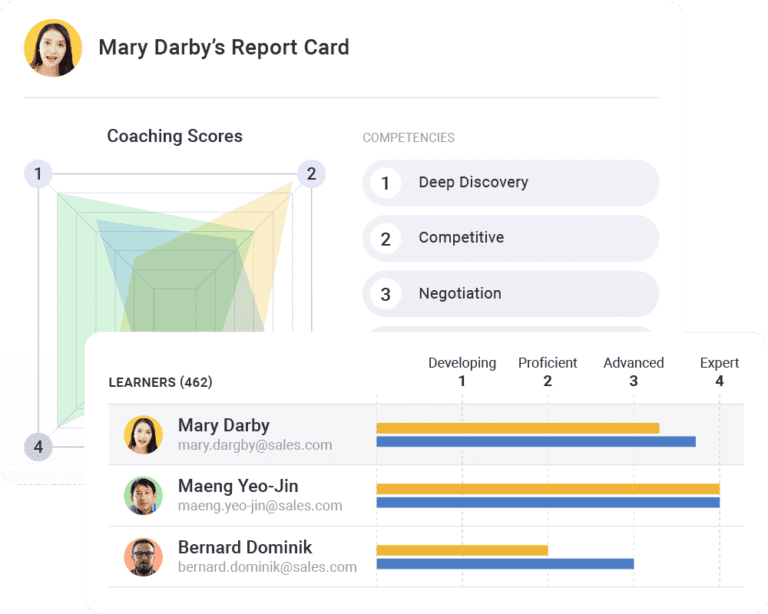

It’s imperative to ensure each of your reps has the skills and competencies they need to be effective, efficient sellers. If they don’t have what it takes, deals will get lost or stalled – and your sales cycle will be unnecessarily long.
Each sales organization must determine what skills and competencies their customer-facing roles need for success. Increasingly, organizations define these skills and competencies in an ideal rep profile (IRP).
Then, reps should be measured against this “gold standard” on an ongoing basis. That way, sales managers and sales enablement teams can identify weaknesses. Then, they can deliver training, coaching, and tools to boost lagging skills – and improve reps’ abilities to effectively and efficiently close deals.
Centralize sales engagement
The road to a closed deal has many touchpoints. All too often, this road is full of friction.
For example, there may be 20 or more email strings related to a single deal – each with a different list of recipients. It’s easy for key information and content to get lost in the mix.
This is bad news for sellers as inefficiency can slow (or even kill) deals.
Today, some revenue productivity platforms incorporate digital sales rooms. Essentially, these are collaborative portals where all members of the buyer and seller team can communicate, share content, and move deals forward. Digital sales rooms drive efficiency – and decrease the length of the sales cycle. In addition, sellers can see how buyers engage with content and other information, which can help them determine what steps to take next.
Optimize your sales cycle to close more deals and drive revenue growth
Documenting your sales cycle is foundational to growing revenue. When you have a clearly defined sales cycle, your reps have a roadmap for every deal that comes your way. What’s more, a sales cycle makes it easier to predict revenue and identify areas for optimization.
With an optimized sales cycle, your teams can close more deals, faster.
It’s essential to ensure your sellers have what it takes to take on any deal. A revenue productivity platform like Mindtickle ensures sales teams have the content, training, tools, and information they need to successfully navigate every step of the sales cycle – all in one location.
Mindtickle in Action
Ready to see how Mindtickle enables sales teams to be ready for any deal at any stage of the sales cycle?
Get a Demo



